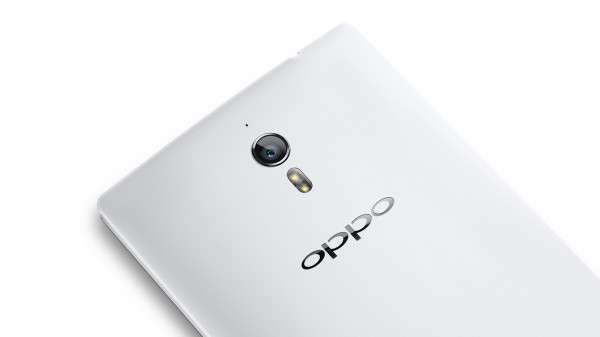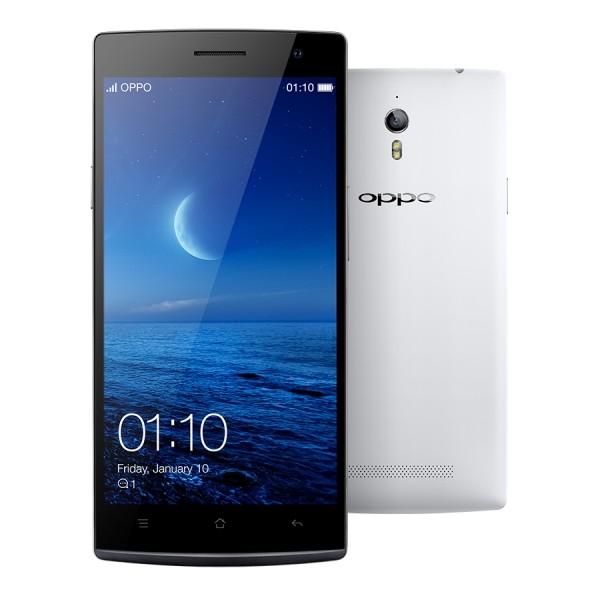If Xiaomi and Huawei are two names that pop up when Singapore users are asked about mainland Chinese phone makers, then Oppo may well be the next manufacturer to join the list.
After a modest foray into Singapore with the N1 which featured a swivel camera (see our review), the company is back with the Find 7a, an updated, smaller model with a more familiar and pocketable size.
My first impressions of the Oppo 7a were pretty good. Measuring 152.6 x 75 x 9.2mm and weighing 170g, it was built very solidly, akin to those coming from its more well known rivals such as Korea’s Samsung and Taiwan’s HTC. In terms of its looks, I preferred the Oppo Find 7a to Xiaomi’s Mi3.
Do note that the Find 7a is similar but not the same as the Find 7. The Find 7a has a smaller capacity battery, less storage and memory (16GB and 2GB RAM) and a full HD resolution screen rather than the Find 7’s sharper QHD screen.
I wouldn’t deny that the eye candy offered by the QHD screen would be delicious. Judging by my first view of the LG G3’s 5.5 inches screen at 1,440 x 2,560 pixels, such screens are gorgeous.
But still in my books, the Find 7a didn’t suffer a huge drop in performance despite packing in fewer pixels. The screen itself still appeared bright and sharp, with quick navigation and fast operation ensuring the best user experience.
During the time I tested it, the phone easily lasted the whole day with moderate use. After a few days of testing, I honestly didn’t miss the QHD screen that much. I contend that the difference would be more obvious when viewing pictures or movies on a much larger screen.
The Oppo 7a also gets many ticks on my essentials list, such as the presence of a removable battery and a microSD Card expansion slot without sacrificing the NFC feature.
Its killer feature, to me, is the rapid charging of the battery. The Oppo Find 7a is packed with what it calls a “VOOC” charging unit that comes with a special seven-pin micro USB connector that fully charges the phone four times faster than a regular USB charger.
There was once when I didn’t insert the charging cable into the phone fully as I left it overnight. Fortunately, when I realised this the next day, I could get it juiced up within an hour and had a fully functional phone before leaving home.

Camera-wise, the Find 7a comes with a 13-megapixel Sony sensor. It is further enhanced through software manipulation to churn out image files equivalent to a 50-megapixel camera. Going by the test shots I have made with the Oppo, there were some improvements but they were not significant – I avoided shooting at such high resolutions most of the time because of the storage required.

The panoramic function works very well.

Taiwan beef noodles in colourful glory. ISO noise can be seen creeping in for indoor and night shoots.

A selfie with beautification mode switched on. The odd thing was the auto flip was not switched on by default to correct the orientation.
At S$599.00, the Oppo Find 7a comes into a smartphone market that has slowly gravitated towards two ends of the price spectrum. The Oppo Find 7a is placed in the middle with a Full HD screen, good build quality and 4G connectivity.
Granted that its Colour OS user interface is more refined and provides shortcuts via screen gestures, the reality is that sometimes the shortcuts actually took longer than the normal way to access things. And to make things worse, the screen is constantly on the alert for gestures and use may use up more battery power than necessary.
In the end, one has to ask if these fringe features actually help to distinguish one from the other smartphones. Can these software features be so unique that they can’t be copied?
Even if they aren’t, are they really that useful for most users? Sometimes, improving the basics and conserving the battery power for more essential services are more important.
On the whole, with a number of nice features, such as its rapid battery charging, the Oppo Find 7a does make it worthwhile to check out. However, it has to also convince users it’s better than many other competitors in a very tight mid-range market.





